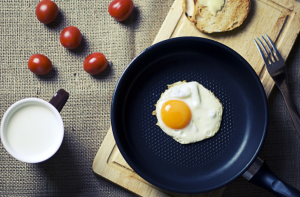Cooking with Heat: A Handy Guide
They say that ‘if you can’t stand the heat you should get out of the kitchen’ but we say there’s rarely a kitchen that doesn’t get hot! So to help you when it comes to cooking wth heat, we’ve put together a handy ‘heat cheat sheet’ to the most-used cooking methods out there.
Know someone who could benefit from a hand in the kitchen? Make sure you share this guide with them; it could well be just what they need to ensure their next beef stroganoff turns out just fine. We’ll be answering a couple of your burning (geddit?!) questions here in this post, so read on and enjoy…
What is ‘Dry’ Heat and When Should You Use it?
It’s true that all methods of cooking fall into one of two categories: dry heat or moist heat. Of course, each category comes with its plus points, but what do these terms actually mean? We’ll start with ‘dry’ heat…
In short, it’s the heat that’s transferred to food without water. This is the heat from grilling on a barbecue or even roasting vegetables in a dish in the oven. It might take a little longer but the end result is pretty similar.
So What Exactly is ‘Moist’ Heat then?
You’ve probably cracked it by now, but if ‘dry’ heat is heat without water, moist heat has got to be the opposite. Right? Correct! It’s basically when you make use of water or stock to help bring some heat to food; you might boil veg in a pan, or slow cook some meat. In fact, it’s a great idea for those recipes which require that something is cooked for a long period of time.
To help you decide which method of cooking is the right one, here are just a few examples:
Dry Heat Cooking Methods
Pan-fry – When cooking with heat, you might choose the dry heat option of pan frying. Use a wok, sauté pan or a general cooking pan and fry with a moderate amount of fat until your food is cooked through.
Bake/Roast – A good choice for vegetables, baking or roasting will surround the food with dry heat by use of the oven.
Grill – A medium-to-high heat option, grilling is done in a cast iron pan or on the barbecue. Always make sure you cook food thoroughly, whichever dry heat method you go for. If grilling, cook your meat on both sides and always make sure it’s steaming and cooked all the way through, too.
Moist Heat Cooking Methods
Simmer – Using a deep saute pan, deep baking pan or pot, the liquid is left to gently bubble between a temperature of around 85°C and 96°C. You’ll probably use this method most often, so you’ll no doubt know exactly how long it takes as well as how your food tastes at the end of it.
Boil – Probably the most obvious choice for cooking food like veg, boiling can be done in a pot or a deep sauté pan. Cooking in water at a temperature of 100°C, boiling is relatively quick and stress-free and, more importantly, gets the job done.
Steam – Requiring a high temperature, steaming your food – via a double boiler or bamboo steamer – ensures your food cooks through. Plus, it’s often the healthier option, meaning few nutrients are lost in the cooking process.
With all those cooking methods in mind, why not make tonight the night you try something new in the kitchen?



